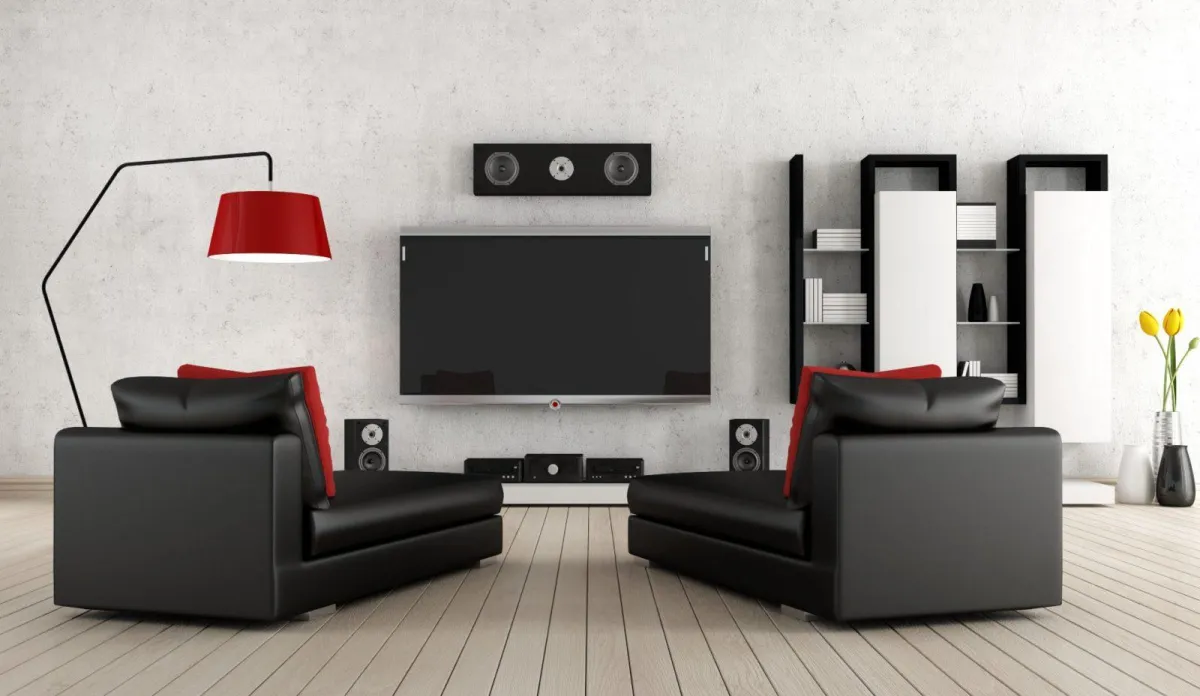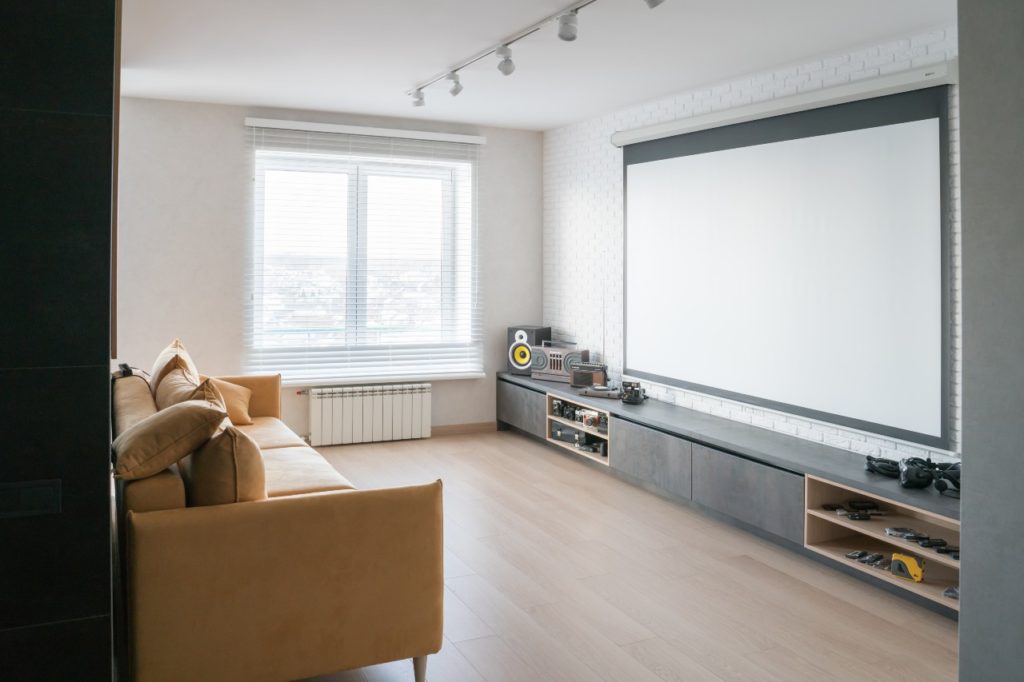
Get Cozy with the Best Home Theater Design
Create your perfect home theater setup with these tips and tricks and make the most out of the indoor winter season.
The winter season is the best time to retreat in the comfort of your house and a home theater can help you get even cozier.
Adding a television to an ordinary room transforms it into a home theater with little effort. But, since it’s the season to immerse yourselves in the latest movies and TV shows, you can bring the movie theater into your homes if you want to put a little extra effort and gather the best elements for a home theater design.
From how to identify the best spot for such an unfolding to how to ensure a high quality of sound, here are a few home theater tips and tricks to create the best experience:
1. Get a home theater system for immersive audio
If you just want a basic home-viewing movie experience, the speakers integrated into your TV are acceptable. But if you want a truly immersive audio experience, you’ll need to upgrade to a home theater system. Multiple speakers and surround sound capabilities are included in home theater systems, allowing you to hear movie soundtracks the way they were designed to be heard — with effects all around your room, enabling a realistic experience.
Subwoofers are used in most home cinema systems for dedicated bass, giving explosions in action movies extra force and rumble. In many cases, an AV receiver is also necessary. The AV receiver powers and processes your speakers, and many receivers also act as a hub for connecting several HDMI devices to your TV.
2. Identify the perfect spot in your home

While we ensure comfort within our homes, we must not forget about our wellbeing. Watching TV, and especially HDTV, has been studied by scientists in order to find the ideal distance between our eyes and these big screens.
The good news is that they have come out with a simple formula to calculate this distance. If we follow these guidelines, we can calculate a proper viewing distance by multiplying the screen size x5. This will ensure a comfortable spacing for our eyes, but just enough to enjoy the entire movie experience. For example, if you opt for a bigger screen (which is actually one of the most common options for home theaters) at 100 inches, you must make sure to position it into a bigger room, with at least 41 feet distance from the screen.
Therefore, identifying the best spot in your home implies taking this distance into account. Also, the size of the TV screen is an important factor: 16:9 and 2.40 are the two aspect ratios. The 16:9 aspect ratio is usually the go-to for the majority of people. While a widescreen movie will have some black bars, all flat-panel TVs and the vast majority of front projectors have a 16:9 aspect ratio.
3. Be careful where you place your speakers
A subwoofer, a bass-only speaker that is designed to really vibrate the room, is another inexpensive audio enhancement. However, the tricky part with these speakers is that they can cause an uncomfortable trembling when positioned in the wrong place.
You can look to place them into a corner of the room or one of the home theater’s walls, as long as there’s enough space to not interfere with the sound propagation. This way their vibration will be controlled and synchronized with the sound effects.
If you’re considering a home theater system in a small room, dedicated speakers are still a must for a cinematic experience. A soundbar is most suitable for compact rooms because it combines numerous speakers into a single low-profile, horizontal container. Some of the slimmer types can be hidden beneath the screen, while others serve as a sort of reinforced platform for the TV to sit on.
And if on top of your home theater ideas is a full-surround system, keep in mind that while it is the best, it is also the most difficult audio setup. This type of system is made of six audio channels or speakers that cover the room with sound. The most important aspect in ensuring the most optimized audio experience stands in how you place these speakers, and mostly the rear-channel placement. Position your speakers into the front corners and center, and prepare a special placement for rear channels to upgrade the experience (tip: they sit better on the wall).
4. Check your angle & lighting
Home theater TVs may require different angles for best positioning. Some can be watched from unusual angles (to the left, right, or even above and below), whilst others demand a dead-center viewing position.
It is best to test the room before you make any hard changes to it. One way of doing this is to position the TV approximately where you want it and test it from every chair or angle — depending on what furniture you’ll have.
If your room has windows, also check how the light is reaching the screen at different times of the day. Either this or look for impenetrable curtains that will transform your room into the darkest spot in your house.
Overall, it would ideal to place your TV where it can’t be reached by light, as this can ruin its image quality. The same rule applies to artificial light as well, so make sure to check all the angles before setting up your system.
5. Ready. Set. Get cozy.
Now that you have your ideal screen, cinematic sound, and proper lighting, it’s time to get cozy.
Decide on the actual design of your home theater system and how you want the room to look like — cinema-like chairs or sofa? light or dark design?
The most common theme for a home theater design is a dark layout, which contributes to a better movie-watching ambiance, but it is ultimately the design preference of the beholder.
Bottom Line
At Sphere Audio Video, we have vast experience in delivering the best home experiences and we can build yours accordingly. What TV size is the most suitable? How to choose a receiver? How many speakers are ideal for your home setting? Leave all those details to us and we’ll design the home theater of your dreams, plus highly optimized. Contact us if you want to upgrade your home experience!

Quick Links
Sphere Audio Video | © 2025. All Rights Reserved
Site By Trustway Marketing
Powered by Kyrios Systems